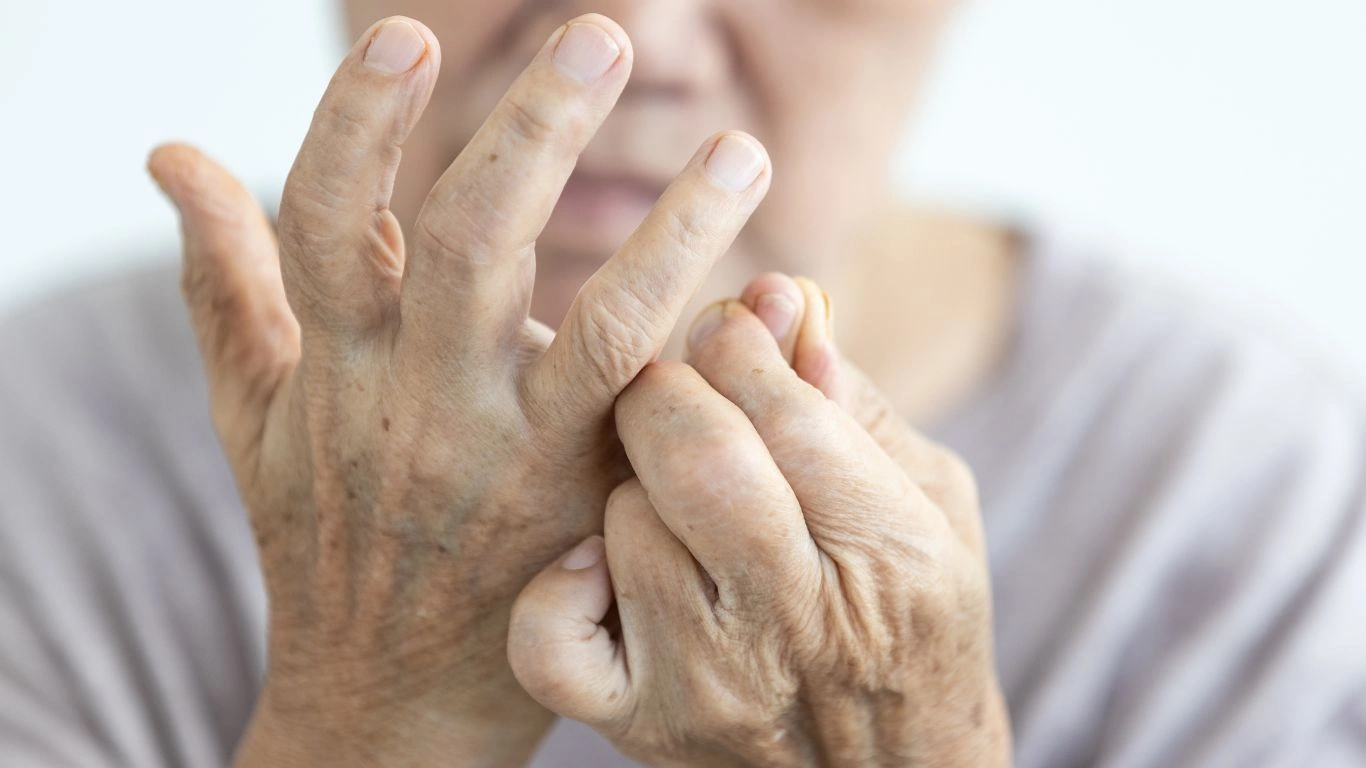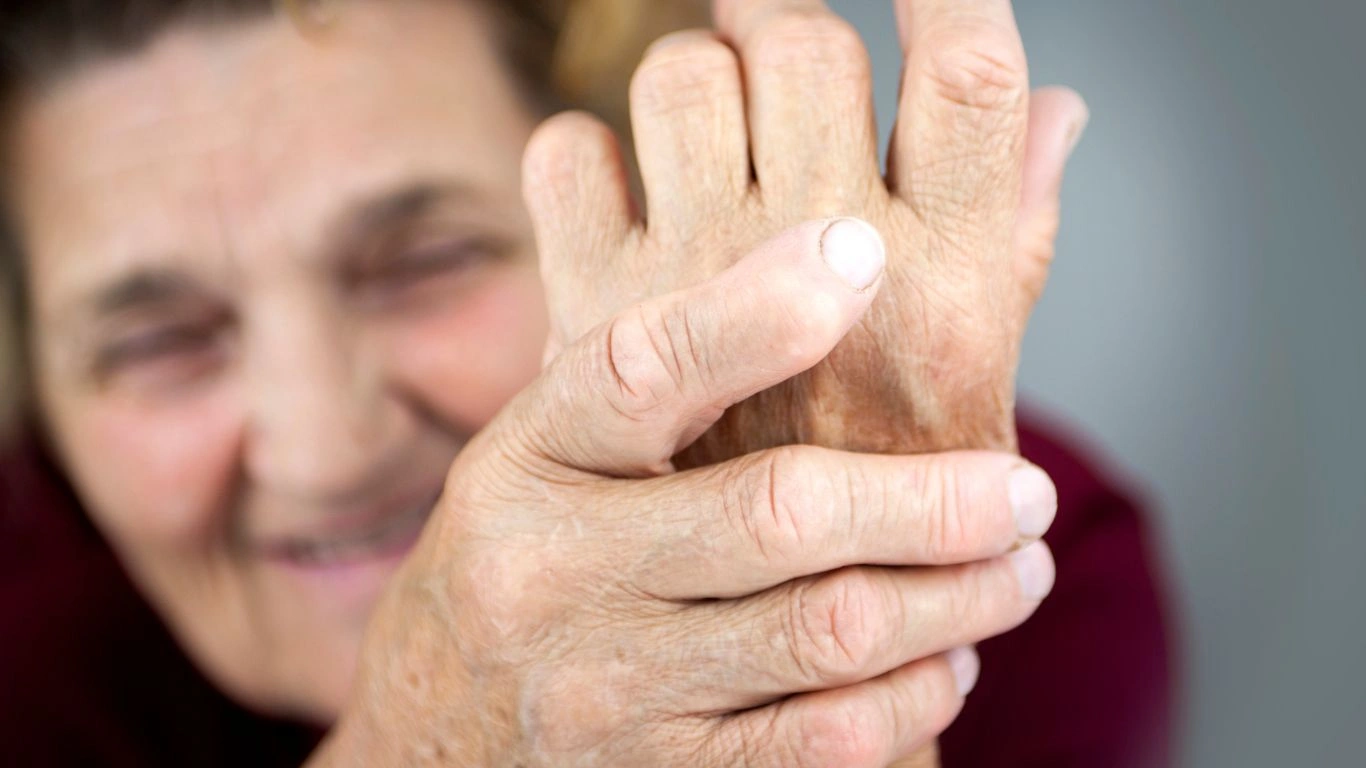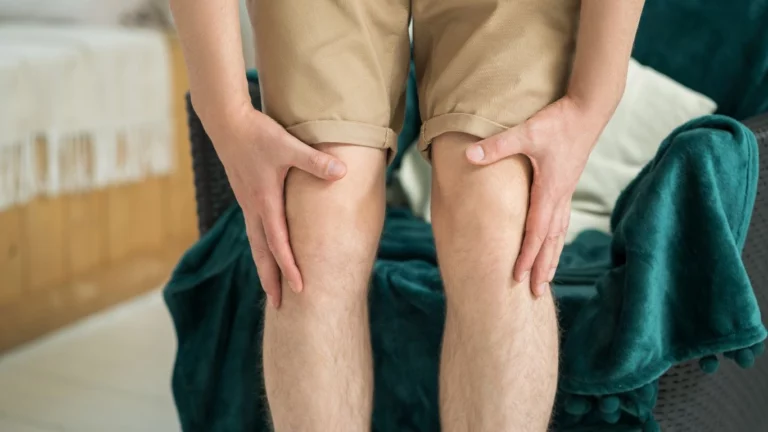How Rheumatoid Arthritis Affects Joint Lubrication & Treatment Options to Improve Life
Rheumatoid arthritis (RA) is more than just a condition that affects the joints. It’s a chronic autoimmune disorder that causes the body’s immune system to attack healthy tissues, particularly in the joints. If you or a loved one has ever been diagnosed with RA, you know how it can impact daily life, making even simple movements painful and challenging. One of the key ways that rheumatoid arthritis affects the body is through its impact on joint lubrication. This is a crucial aspect of the disease that often gets overlooked, but it can greatly influence both the progression and the management of the condition. Let’s dive into how RA messes with the natural lubrication of your joints and what it means for you.
Understanding Joint Lubrication and Its Importance in Healthy Movement
To truly understand how rheumatoid arthritis disrupts joint lubrication, we need to first talk about why joint lubrication is so vital. Your joints are surrounded by a smooth, gel-like substance called synovial fluid. This fluid acts like motor oil in an engine – it reduces friction, provides cushioning, and keeps everything moving smoothly. Without it, the bones in your joints would rub against each other, causing pain, inflammation, and even damage over time. For healthy individuals, this fluid is constantly produced and maintained, but in people with RA, it’s a whole different story.
What Happens to Joint Lubrication in RA?
Rheumatoid arthritis triggers an inflammatory response in the synovial membrane, which is the lining of your joints. This inflammation leads to an increase in fluid production, but it’s not the healthy kind of lubrication your body needs. Instead, the excess fluid is often thick and sticky, which can worsen joint swelling and create discomfort. Over time, this chronic inflammation can cause the synovial membrane to thicken, leading to even more issues. This is why individuals with RA experience stiffness, swelling, and pain that can make movement feel like an uphill battle.

Why Does RA Affect Joint Lubrication So Drastically?
RA is not just an issue of inflammation; it’s an autoimmune disease. Your immune system mistakenly attacks healthy tissue, including the synovial lining, thinking it’s doing its job to protect you. The body’s immune cells release inflammatory chemicals that cause the synovium to swell. This constant inflammation interferes with the production of healthy synovial fluid. In some cases, the inflammation can cause permanent damage to the cartilage in the joint, further limiting its ability to move smoothly. The result? A vicious cycle of joint stiffness, pain, and decreased function. You may find that even after resting, your joints still feel stiff and painful due to this disruption in lubrication.
How Rheumatoid Arthritis Progresses and Its Effect on Joint Mobility
Rheumatoid arthritis doesn’t just affect your joints in the short term; over time, it can lead to significant and sometimes irreversible damage. The destruction of cartilage and bones is one of the most concerning aspects of RA, and it all stems from this imbalance in joint lubrication. As your body struggles to manage the inflammation, the synovial fluid loses its ability to perform its intended function. Without proper lubrication, the friction between the bones in your joints increases, leading to more damage.
The Role of Inflammation in Joint Damage
When inflammation becomes chronic, it doesn’t just stay in the soft tissues like the synovial membrane. It can spread to the surrounding cartilage, eroding it over time. This is why people with RA often experience cartilage loss, which contributes to the overall damage to joint structures. As the cartilage breaks down, bones can start to rub together, causing bone erosion. This is why people with severe RA sometimes experience deformed or misshapen joints. The lack of lubrication plays a direct role in accelerating this process.

Symptoms You Should Watch Out For
If you’re experiencing symptoms of rheumatoid arthritis, you might already be familiar with the pain, swelling, and stiffness that come with it. However, if you are just starting to notice joint issues, the lack of proper lubrication might not be immediately obvious. Some of the more subtle signs that your joint lubrication is compromised by RA include:
- Morning Stiffness: You might notice that your joints feel particularly stiff in the morning or after periods of inactivity. This is due to a lack of proper lubrication.
- Swelling: Inflammation in the joints leads to excess synovial fluid, causing visible swelling around the affected joints.
- Warmth and Redness: As the inflammation worsens, you may notice the affected joints becoming warmer or even redder than usual.
- Decreased Range of Motion: The thicker, sticky synovial fluid can prevent smooth joint movement, making it harder to fully extend or flex your joints.
As a rheumatoid arthritis expert, I’ve seen firsthand how these symptoms can significantly impact a person’s quality of life. Joint lubrication isn’t something people typically think about until it’s too late, but when it’s compromised, even small activities like opening a door or typing on a keyboard can become a painful experience.

Managing Joint Lubrication and RA Symptoms
Managing rheumatoid arthritis often involves a combination of medications, physical therapy, and lifestyle changes. For joint lubrication specifically, it’s important to focus on reducing inflammation while supporting joint health. Nonsteroidal anti-inflammatory drugs (NSAIDs) and disease-modifying antirheumatic drugs (DMARDs) can help control inflammation and slow the progression of joint damage. In some cases, corticosteroids may be used to quickly reduce swelling. But medication alone won’t restore the natural balance of joint lubrication; it’s a multi-faceted approach.
Diet and Supplements to Support Joint Health
Did you know that what you eat can have an impact on joint lubrication? Including anti-inflammatory foods like omega-3-rich fish, nuts, and leafy greens can help reduce overall inflammation in the body. In addition, supplements like glucosamine and chondroitin may support cartilage health and help with the production of synovial fluid. While they won’t cure RA, they can make a difference in how your joints feel day-to-day. Remember, it’s important to consult with your doctor before starting any supplement regimen, as they can interact with other medications.
Long-Term Effects of Rheumatoid Arthritis on Joint Function
As we discussed in Part 1, rheumatoid arthritis (RA) doesn’t just affect your joints in the short term – it can have lasting, long-term effects that continue to challenge mobility and daily function. The destruction of joint cartilage, the interference with lubrication, and the weakening of surrounding muscles all contribute to what I call the “domino effect” of RA. Over time, the combination of chronic inflammation and poor joint health can make even simple activities like walking, gripping, or bending more difficult. This is why it’s so important to understand how RA progresses, so we can take proactive steps to manage the condition and slow down its impact on joint function.
The Cycle of Inflammation and Joint Deterioration
It’s easy to see how RA can create a vicious cycle. You start with inflammation in the synovial membrane, which disrupts lubrication and causes pain. The pain leads to reduced movement, which then leads to more stiffness and more inflammation. This cycle makes it harder to use the affected joints and can lead to muscle atrophy (weakening) around the joint due to disuse. If left unchecked, this cycle can cause irreversible damage over the years. I’ve seen patients who’ve been managing RA for decades, and the damage to their joints often results in permanent deformities. But the good news is that with early intervention and consistent management, you can break that cycle and maintain a better quality of life.

Joint Deformities: The End-Stage of RA
One of the most heartbreaking aspects of long-term RA is the potential for joint deformities. Over time, as the synovial lining thickens and inflammation persists, the structures of the joint can begin to change. The cartilage that normally cushions the bones in your joints starts to wear away, and eventually, the bones themselves can become eroded. This leads to misalignment and deformity. For instance, I’ve worked with several patients who develop “swan neck” or “boutonnière” deformities in their fingers, which affect their ability to grip objects or even perform basic tasks like buttoning a shirt or holding a cup of coffee. The pain can be intense, and the deformity can feel like a daily reminder of how RA is changing their body. But while deformities are common in advanced RA, they’re not inevitable. Early, aggressive treatment can prevent or slow this progression.
Reducing Inflammation: The Key to Joint Preservation
As I’ve mentioned, the root of much of the damage in rheumatoid arthritis is inflammation. If we can get a handle on the inflammation, we can keep the joints healthier for longer. The goal in treating RA is to stop inflammation in its tracks before it causes permanent damage to the joints. That’s where medications come in. Disease-modifying antirheumatic drugs (DMARDs), including biologics, are incredibly effective at reducing inflammation. But it’s not just about the meds – lifestyle changes also play a huge role in managing inflammation.
Exercise and Physical Therapy for Joint Health
You might be thinking, “But wait, won’t exercise make my RA worse?” It’s a valid question, and I understand the hesitation. After all, when your joints hurt, the last thing you want to do is move them around more. However, the right kind of exercise is actually essential for joint health, especially when you have RA. Regular, low-impact exercises like swimming, walking, and gentle yoga can help maintain joint mobility, improve muscle strength, and reduce stiffness. These exercises can also help to maintain proper lubrication by encouraging the production of synovial fluid through movement.
Physical therapy is another great tool in the RA management toolbox. A skilled therapist can teach you targeted exercises to improve joint function and reduce pain, all while preventing further damage. I’ve worked with countless patients who have seen major improvements in their ability to move and perform daily activities by sticking with a physical therapy plan. If you’re unsure about where to start, don’t hesitate to ask your doctor for a referral. The right exercise and therapy can make all the difference in how your joints feel.

Heat and Cold Therapy for Pain Relief
Heat and cold therapy are simple, yet incredibly effective tools for managing RA symptoms. Heat can help relax stiff muscles and improve circulation, while cold packs can reduce inflammation and numb pain. I recommend alternating between hot and cold packs, depending on the situation. If your joints are feeling stiff or tense, a warm compress can help. But if you’re dealing with inflammation and swelling, a cold pack can do wonders for calming things down.
One of my personal go-to tricks when my patients are feeling overwhelmed by pain is to combine these therapies with some rest. It’s crucial to give your joints time to recover, especially during flare-ups. This kind of active self-care helps manage symptoms and keep the body’s response to RA under control.
Dietary Strategies to Support Joint Lubrication
You may be surprised to learn that what you eat can actually influence the lubrication of your joints. I can’t stress enough how diet plays a pivotal role in managing rheumatoid arthritis. While no single food will “cure” RA, some foods can help reduce inflammation and support joint lubrication. A diet rich in anti-inflammatory foods is key to maintaining healthy joints and slowing down the disease’s progression.
Anti-Inflammatory Foods to Include in Your Diet
Eating foods that naturally fight inflammation is one of the best ways to support your body’s ability to manage RA. Omega-3 fatty acids, found in fatty fish like salmon and mackerel, have been shown to reduce inflammation and may help improve joint lubrication. Another great source of anti-inflammatory compounds is turmeric, which contains curcumin. I’ve had several patients who swear by adding turmeric to their daily routines, either in smoothies or as a supplement, to help with pain relief.
- Omega-3 Fatty Acids: Found in salmon, walnuts, and flaxseed, these healthy fats have anti-inflammatory properties.
- Antioxidant-Rich Vegetables: Leafy greens, broccoli, and Brussels sprouts are packed with antioxidants that help fight inflammation.
- Whole Grains: Brown rice, quinoa, and oats provide fiber and can help reduce overall inflammation.
- Spices: In addition to turmeric, ginger also has strong anti-inflammatory effects.
Of course, it’s equally important to avoid foods that can trigger inflammation. Things like processed sugars, trans fats, and excessive red meat can exacerbate the symptoms of RA. By making these small dietary adjustments, you can support your joints and possibly even reduce the severity of your symptoms.

Advanced Treatment Options for Rheumatoid Arthritis
When managing rheumatoid arthritis (RA), there comes a time when medications alone aren’t enough to keep symptoms under control, especially if the disease has been progressing for years. While early-stage RA can often be managed with disease-modifying antirheumatic drugs (DMARDs) and NSAIDs, in later stages, more advanced treatments may be required to reduce inflammation, improve joint lubrication, and prevent further damage. This is where biologic therapies, corticosteroids, and even surgical options come into play. Over the years, I’ve seen how these treatments, when properly managed, can significantly improve patients’ quality of life and prevent the disease from taking over.
Biologics: A Game Changer in RA Treatment
One of the biggest breakthroughs in rheumatoid arthritis treatment has been the development of biologic therapies. Biologics are a class of medications that target specific parts of the immune system that cause inflammation, rather than just suppressing the immune system as a whole. They are often prescribed when traditional DMARDs don’t provide adequate relief or when the disease is more aggressive.
For those with RA, biologics have proven to be incredibly effective in not only reducing inflammation but also helping to restore some of the natural lubrication in the joints. By blocking the inflammatory processes at their source, biologics can help reduce pain, prevent joint damage, and improve mobility. While these medications can have side effects and may require regular monitoring, they’ve made a huge difference for many of my patients, especially those with more advanced RA.

Corticosteroids: Fast Relief, But Use with Caution
Corticosteroids like prednisone are commonly used to manage inflammation during a flare-up. They can provide fast relief from the pain and swelling associated with RA. However, while corticosteroids can be highly effective in reducing inflammation, they are generally not recommended for long-term use due to their potential side effects, which include osteoporosis, weight gain, and increased susceptibility to infections.
Personally, I’ve seen patients who’ve benefited greatly from a short-term corticosteroid regimen to break the cycle of inflammation during a particularly painful flare. However, once the flare is under control, it’s crucial to switch to other medications that can provide longer-term control without the same risks. It’s always a balancing act, and the goal is to keep inflammation under control while minimizing potential harm.
Surgical Options for Severe Joint Damage
In some cases, when joint damage becomes severe and other treatments no longer provide relief, surgery may be necessary. Joint replacement surgery, especially for the knee, hip, or fingers, has become more common for people with RA. This procedure can help reduce pain, restore mobility, and improve overall quality of life, especially when the damage from RA is so advanced that it severely limits function.
Joint Replacement: When It’s Time to Consider It
Joint replacement isn’t typically the first line of defense, but for those who have been dealing with severe joint deformities and pain that no longer responds to other treatments, it can be a life-changing option. I’ve had several patients who, after undergoing joint replacement surgery, have seen a dramatic improvement in their ability to do things they couldn’t before—like walking long distances or even just getting out of bed in the morning without help.
Of course, surgery carries risks and recovery can be lengthy, but for many RA patients, it’s the step that helps them regain their independence. It’s important to have a thorough discussion with your doctor to understand the risks, benefits, and recovery process involved in such a procedure.

Preventing Joint Damage: Key Lifestyle Strategies
In addition to medications and advanced treatments, lifestyle changes play a critical role in managing rheumatoid arthritis. By incorporating specific habits and strategies into your daily routine, you can significantly reduce the rate of joint deterioration and even improve lubrication in your affected joints. Here are some simple yet effective lifestyle strategies I recommend to my patients:
Maintaining a Healthy Weight
If you’ve got RA, your joints are already under a lot of stress due to inflammation. Adding excess weight to the mix can make matters worse, especially for weight-bearing joints like your knees and hips. Maintaining a healthy weight helps reduce the strain on these joints, which can alleviate some of the pain and discomfort caused by RA. By eating a well-balanced, anti-inflammatory diet and staying active with low-impact exercise, many of my patients have seen an improvement in their symptoms and overall mobility.
Staying Active and Moving Regularly
Exercise, as I mentioned earlier, is essential for joint health, but it’s even more crucial for RA patients. Regular movement helps to improve blood circulation, reduce stiffness, and stimulate synovial fluid production, which is vital for joint lubrication. It also strengthens the muscles surrounding the joint, providing more stability and lessening the strain on the joint itself.
The key is to choose exercises that don’t put too much stress on the joints, such as swimming, cycling, or walking. Over time, the benefits of regular exercise in managing RA can be huge. It’s all about consistency. Even 10 to 15 minutes of gentle stretching or yoga each day can make a significant difference in the long term.
References and Resources
If you’d like to learn more about rheumatoid arthritis and its impact on joint lubrication, as well as additional treatment options, here are some trusted resources:
- Rheumatoid Arthritis Treatments Overview
- Rheumatoid Arthritis Support and Information
- Clinical Research on RA and Joint Lubrication
Disclaimer
While the information provided in this article is based on years of experience and scientific research, please note that it is intended for informational purposes only. Always consult with a healthcare professional for a diagnosis and personalized treatment plan for your specific condition. Treatments for rheumatoid arthritis should be tailored to each individual, and what works for one person may not be suitable for another. It’s important to have open discussions with your doctor about your symptoms, treatment options, and any concerns you may have.

Tarra Nugroho is a dedicated Nurse Practitioner with a strong foundation in family and preventive care. She brings both compassion and clinical expertise to her practice, focusing on patient-centered care and health education. As a contributor to Healthusias.com, Tarra translates medical knowledge into clear, empowering articles on topics like women’s health, chronic disease management, and lifestyle medicine. Her mission is simple: help people feel seen, heard, and informed—both in the clinic and through the content she creates. When she’s not caring for patients, Tarra enjoys weekend hikes, plant-based cooking, and curling up with a good health podcast.






